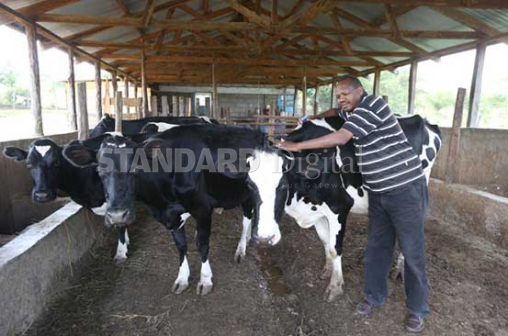×
The Standard e-Paper
Smart Minds Choose Us

Retired lieutenant colonel Cheptoo Kimosop is an entertaining character. You just want to sit at his feet and listen to his fascinating tales. The outgoing Kimosop has been privileged to be a pilot for two former Heads of State — Daniel Moi and Mwai Kibaki — but retired in 2008.
The former pilot who joined the military as a Cadet in 1982 and rose through the ranks, talks passionately about his journey from presidential jet pilot to an established dairy farmer.